Over the past few months we have reviewed a couple of the drives from Crucial’s MX300 line, both the 1050GB and the 750GB. Today we will be looking at the largest capacity drive in the series, another slightly odd capacity at that, with the 2050GB drive. The reviews are spaced out due to drive availability versus having one review that encompasses all of the drives and compares the different capacities side by side as is typically the pattern we follow at StorageReview.
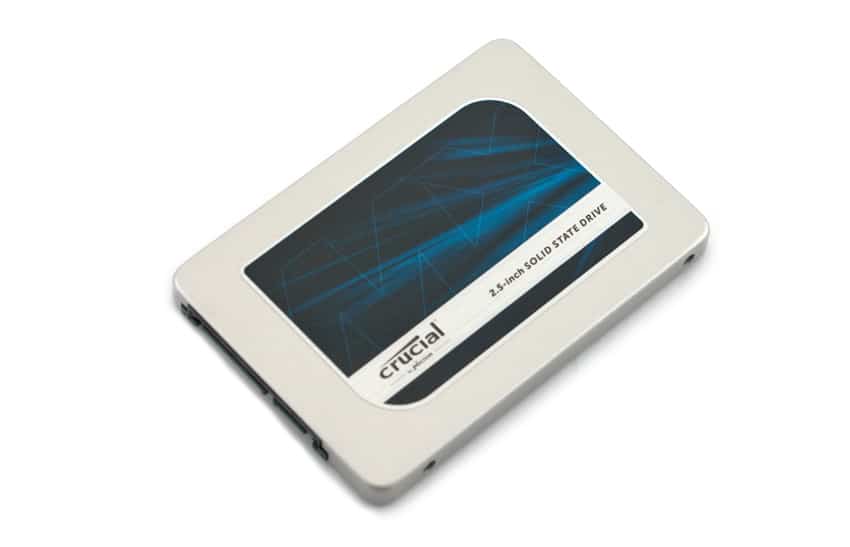
All of the features and most of the specifications are the same in the MX300 series (including quoted performance); the only real difference seen between the drives is the capacity points. For those that have read the previous two reviews feel free to skip ahead to the performance section. If this is the first time you have read a MX300 review, the entire line has slightly different capacity points from other SSDs on the market due to Crucial’s use of 384Gb NAND versus the typical 256Gb. Crucial leverages AES 256-bit hardware-based encryption and RAIN technology for data protection. And the drive uses Adaptive Thermal Protection to keep the drive from overheating as well as potentially lowering active power usage.
The MX300 2050GB (2.05TB just doesn’t quite have the right ring to it) carries a 3-year warranty with a street price of $550 or $.275/GB.
Crucial MX300 2050GB SSD specifications
- Form Factor: 2.5-inch internal SSD
- Total Capacity: 2,050GB
- Warranty: Limited 3-year
- Interface: SATA 6.0Gb/s
- Performance
- 530MB/s Read
- 510MB/s Write
- 92K Random Reads
- 83K Random Writes
- Unit Height: 7.0mm
Design and build
Much like the specifications, features, and quoted performance, the exterior of the drives is nearly identical as well. The drive is a 2.5” 7mm form factor that has an aluminum body and the MX300 sticker on top. The reverse side has a white sticker that lists off information about the drive including capacity.
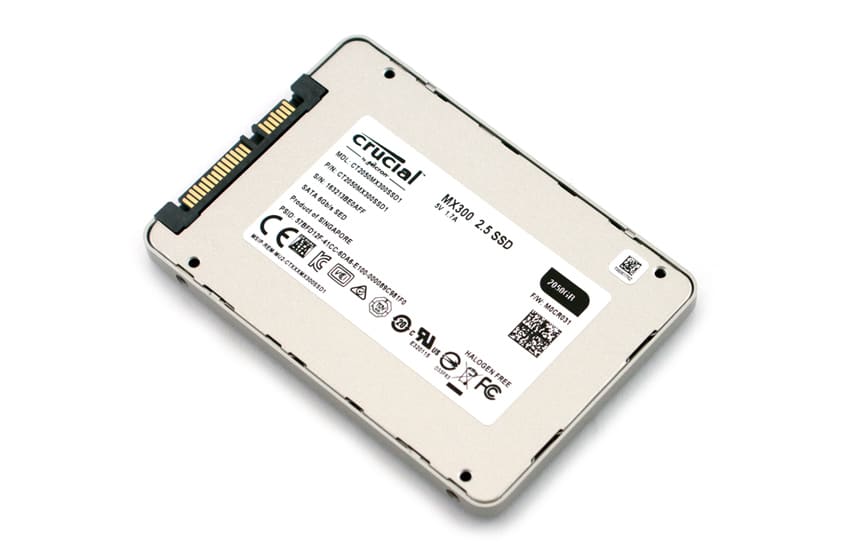
Popping apart tabs on either side of the outer case opens up the drive to remove the PCB.
The MX300 uses Micron NAND packs and DRAM and a Marvell controller.
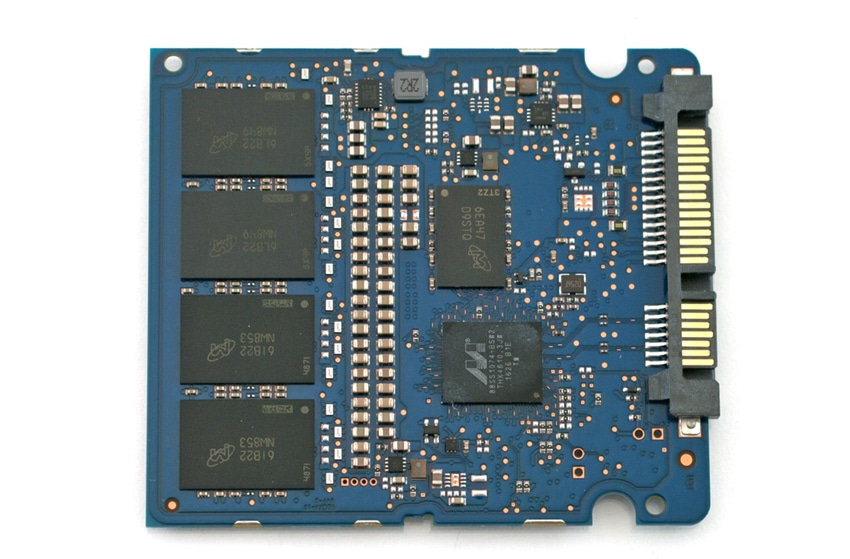
Consumer Synthetic Benchmarks
All consumer SSD benchmarks are conducted with the StorageReview HP Z640 Workstation. We compared the Crucial MX300 SSD 2050GB SSD to other high capacity consumer drives, the drive are the following:
- Samsung 850 EVO 2TB (SATA, 6Gb/s, Samsung MHX controller)
- Samsung EVO 4TB (SATA, 6Gb/s, Samsung MHX controller)
- Crucial MX300 1050GB (SATA, 6Gb/s, Marvell controller)
All IOMeter figures are represented as binary figures for MB/s speeds.
In our 2MB sequential benchmark, the Crucial MX300 2050GB (referred to as 2050GB from here on out) gave us write performance of 462.91MB/s, beating out the Crucial MX300 1050GB (referred to as the 1050GB from here on out) at 460.67MB/s. On read performance, the 2050GB was at the bottom of the pack with 347.21MB/s. The Samsung 850 EVO 4TB was the top performer overall to no surprise.
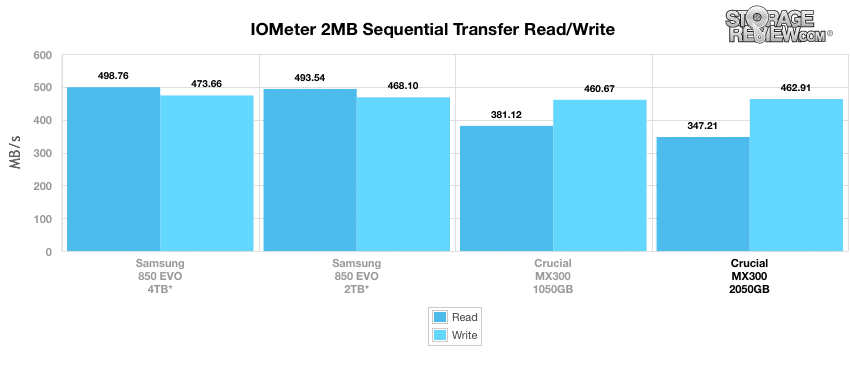
Random 2MB transfers painted a similar picture, with the 2050GB beating out its smaller brethren in writes at 461.56MB/s to 460.67MB/s but fell behind in reads with 351.51MB/s to the 1050GB’s 372.52MB/s. The 4TB Samsung once again came out on top.
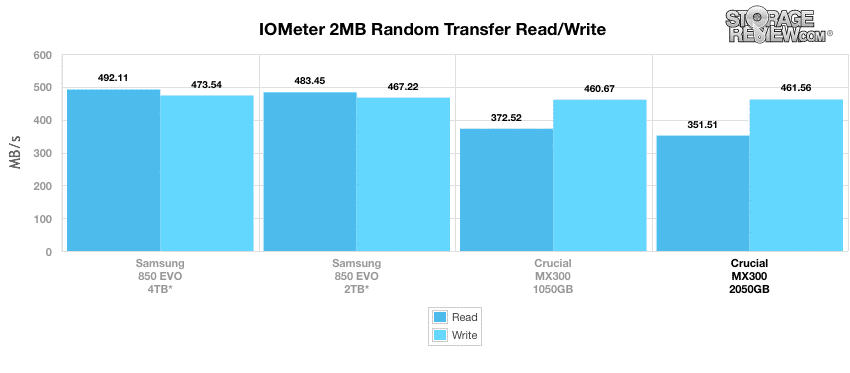
Our random 4K benchmark puts more strain on the drives in terms of throughput. In this scenario, the 2050GB was near the bottom of the pack with a read performance of 26.82MB/s just edging out the 1050GB at 26.75MB/s but fell to last in writer performance with 106.01MB/s. Though the 4TB Samsung was once again in the top spot it was only ahead of the 2050GB on writes by roughly 11MB/s.
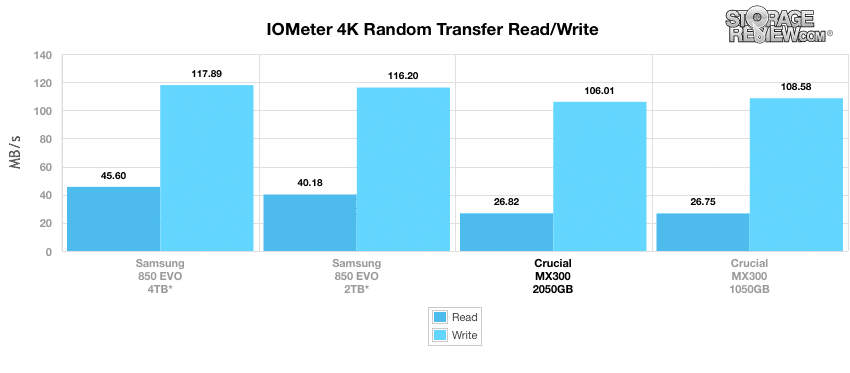
For 4K throughput the placement was the same as the above, while the 2050GB narrowly edged out the 1050GB in read, 6,867 IOPS to 8,848 IOPS respectively, it fell behind on writes with 27,139 IOPS.
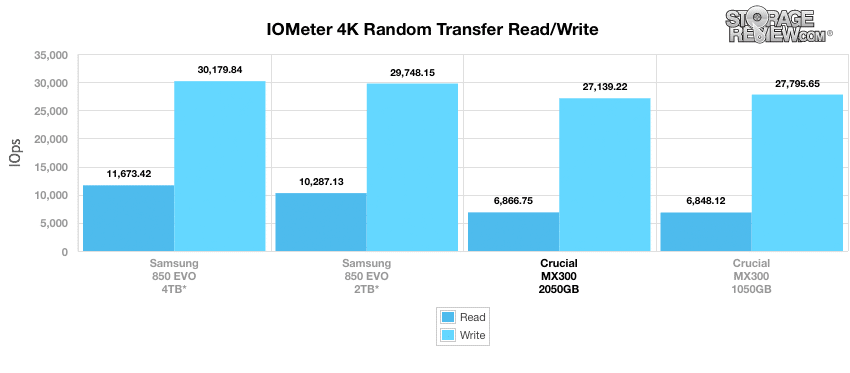
With our 4K write latency the 2050GB slips to the bottom of the pack in moth average latency as well as max latency. With average latency it was only slightly behind the other drives at .0367ms, however max latency put it almost twice has high as the next closest drive at 17.55ms.
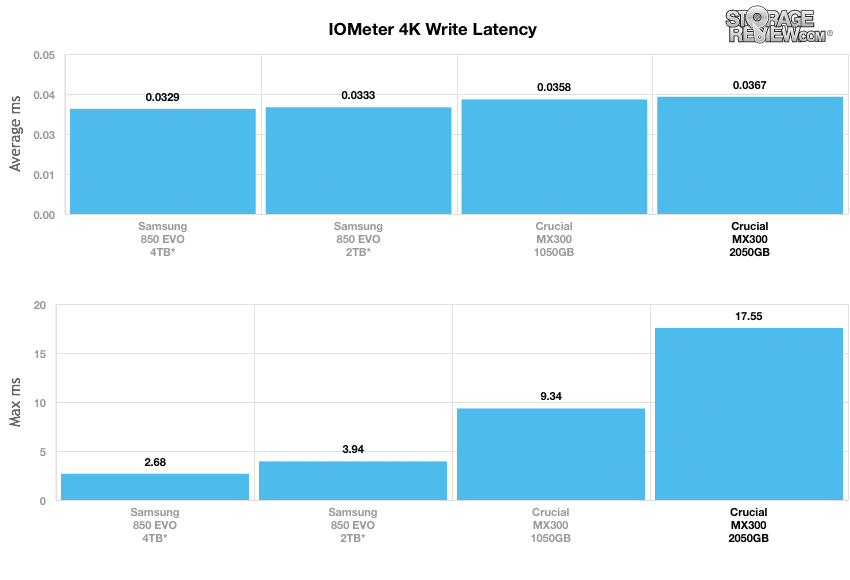
In our next 4K test, we move to a workload with 100% write activity, which scales from 1QD to 64QD. The 2050GB more or less tracked along with the 1050GB finishing north of 80K IOPS which wasn’t terribly far behind the Samsung drives.
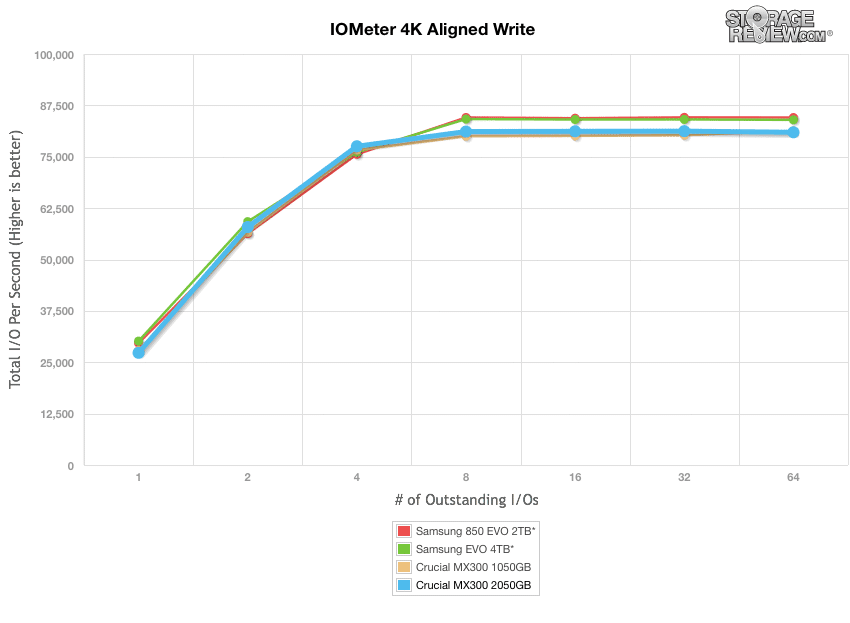
For our aligned-read benchmark the 2050GB once again tracked along with the 1050GB this time going slightly above the other drive. While the 2TB Samsung finished at the top the 2050GB was able to finish alongside the 4TB Samsung.
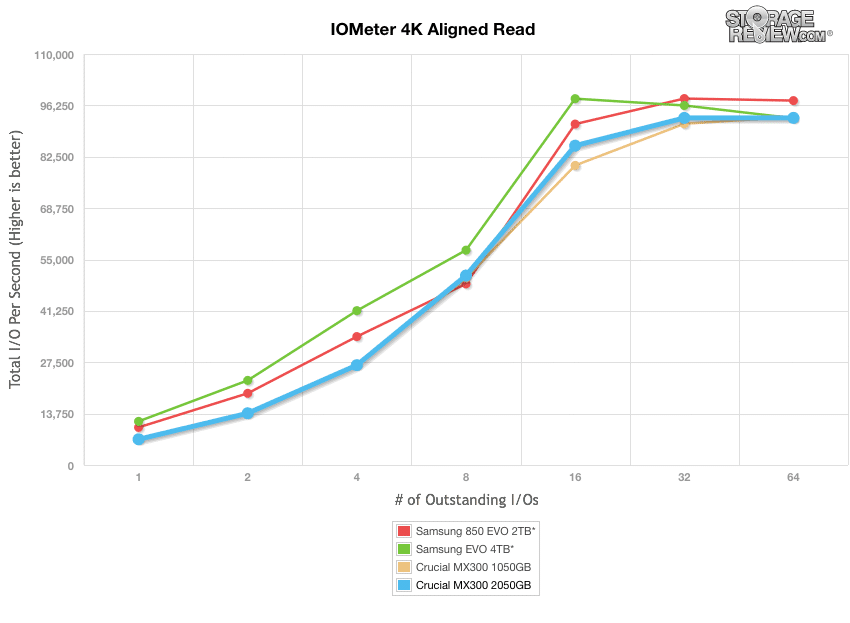
Our final consumer-synthetic benchmarks compare the drives in a series of mixed server workloads with a queue depth of 1 to 128. Each server profile has a strong bias towards read activity, ranging from 67% read with the database profile to 100% read in the web server profile.
The database profile features a 67% read and 33% write workload, focusing on transfers around 8K in size. The 2050GB started off keeping up with the 1050GB but quickly fell behind the rest of the pack to finish last around 34K IOPS.
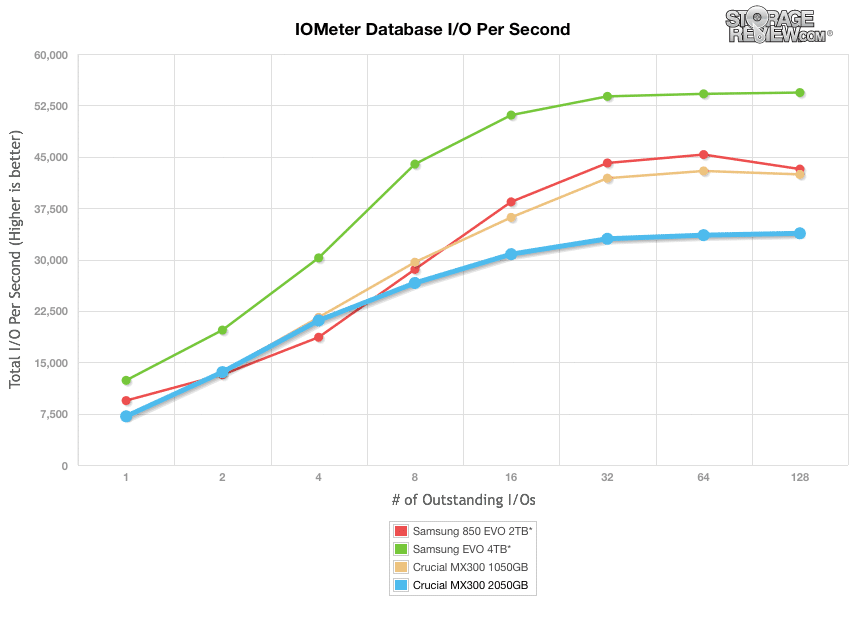
Our next benchmark is the read-only web-server profile, which uses transfer sizes ranging from 512 bytes to 512KB. The placement was similar to the above with the 2050GB starting out by keeping pace with the 1050GB before falling behind the other drives to finish last around 22K IOPS.
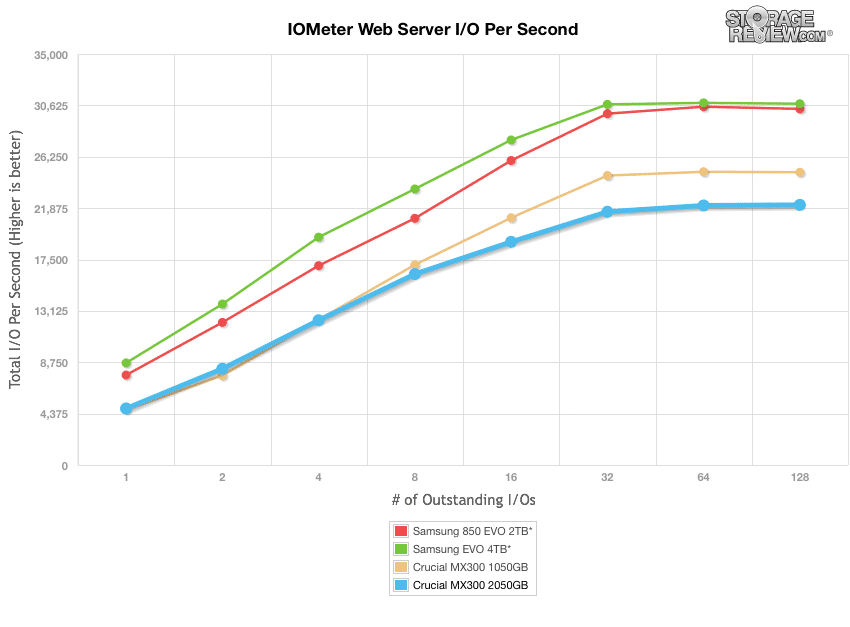
The file-server profile has 80% read and 20% write workload spread out over multiple transfer sizes ranging from 512-bytes to 64KB. Here the 2050GB was once again at the bottom of the pack by a slightly larger margin finishing just under 21K IOPS.
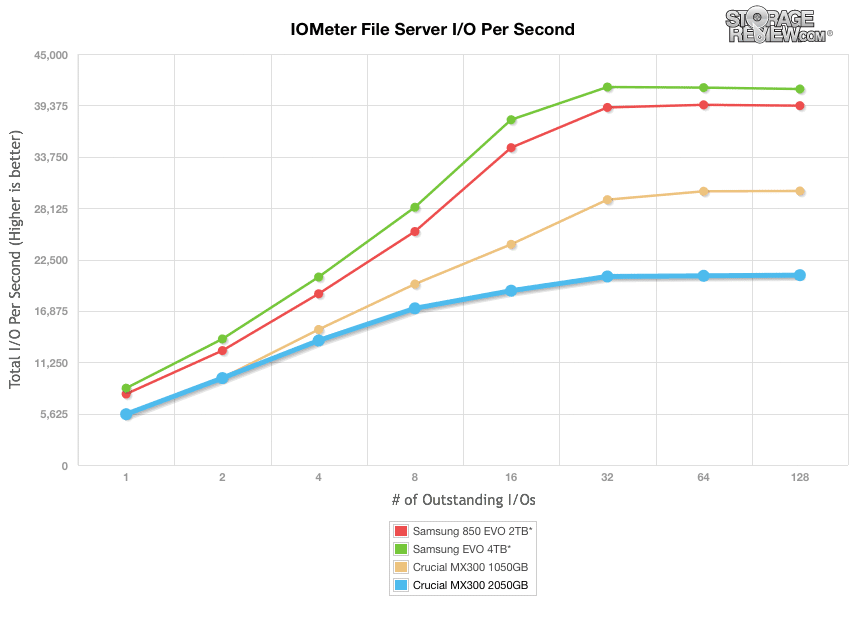
The last profile looks at workstation activity with a 20% write and 80% read mixture using 8K transfers. Once again the 2050GB ran behind the rest of the drives though it did almost catch up to the Samsung EVO 850 2TB coming within 1,600 IOPS at one point.
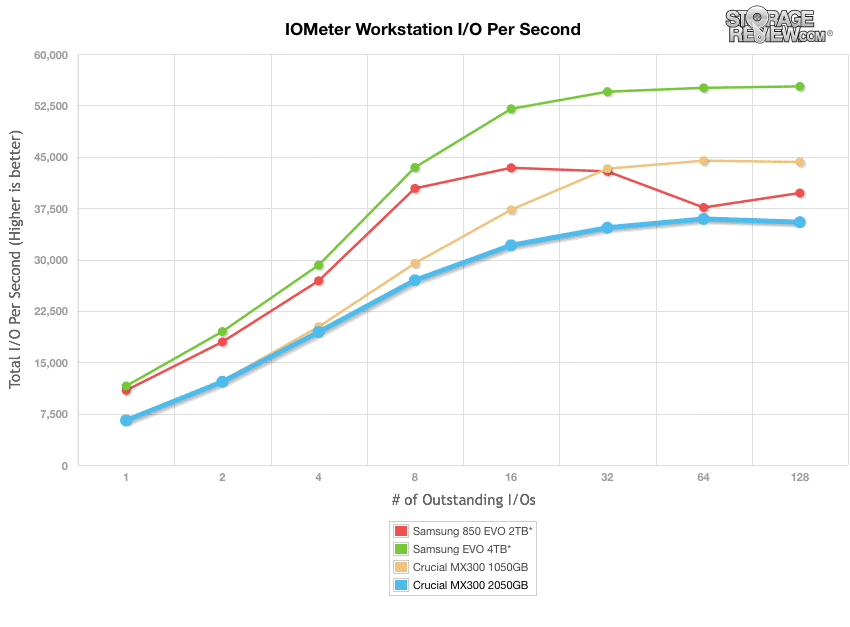
Consumer Real-World Benchmarks
While the results of synthetic benchmarks are important in identifying the key strengths and weaknesses of a drive, performance in these tests does not always translate directly into real-world situations. To get a better idea how the high-capacity Crucial MX300 drive will handle itself in the field, we will chart StorageMark 2010 HTPC, Productivity, and Gaming traces against comparable drives. Higher IOPS and MB/s rates with lower latency times are preferred.
The first trace is based on use as a Home Theater PC (HTPC). The test includes playing one 720P HD movie in Media Player Classic, one 480P SD movie playing in VLC, three movies downloading simultaneously through iTunes, and one 1080i HDTV stream being recorded through Windows Media Center over a 15-minute period.
The 2050GB came in last in all metrics of the HTPC test with 307.4MB/s, 6,627 IOPS, and a latency of 1.136ms.
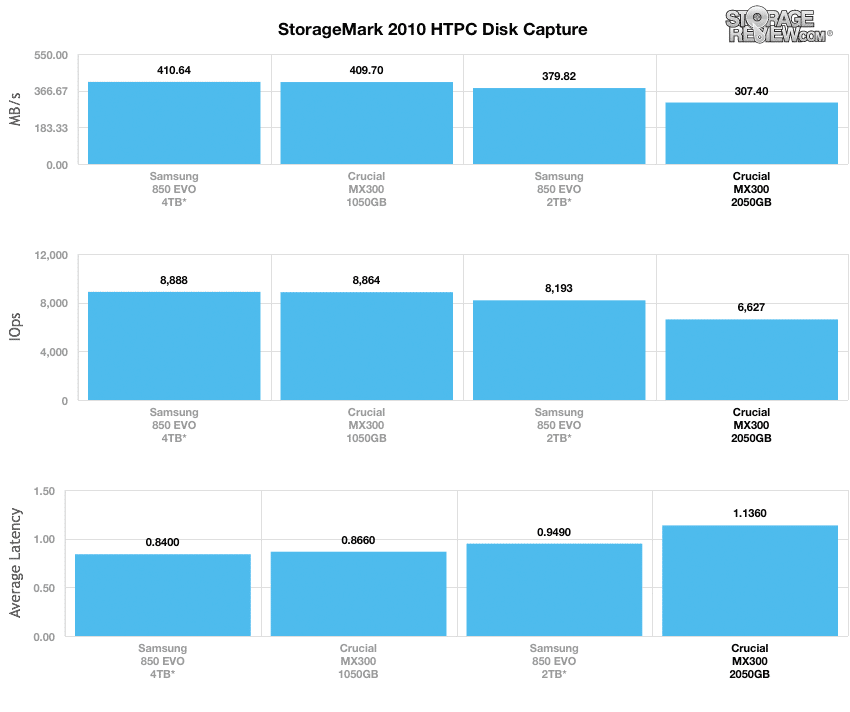
The next trace simulates disk activity in an office workstation or productivity scenario. This test includes three hours of operation in an office productivity environment with 32-bit Windows Vista running Outlook 2007 connected to an Exchange server, web browsing using Chrome and IE8, editing files within Office 2007, viewing PDFs in Adobe Reader, an hour of local music playback, and two hours of streaming music via Pandora.
In the productivity benchmark, the 2050GB came in last once again showing roughly half the performance of the 1050GB with 120.33MB/s, 4,113 IOPS, and a latency of 1.914ms.
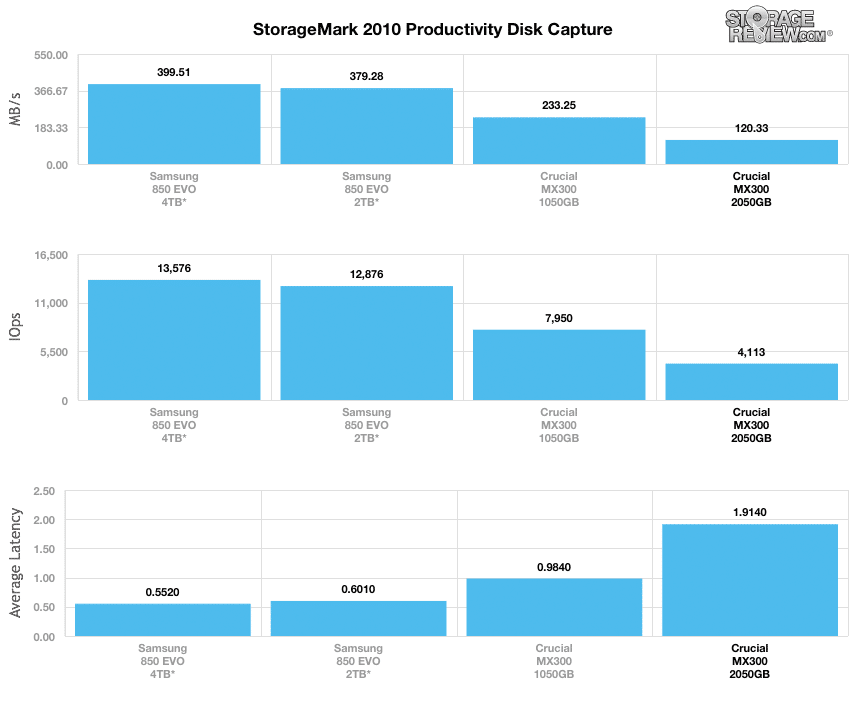
The final consumer real-life benchmark simulates disk activity during gaming. This simulation taxes the drive’s read performance, with 6% write operations and 94% read operations. The test consists of a Windows 7 Ultimate 64-bit system pre-configured with Steam, with Grand Theft Auto 4, Left 4 Dead 2, and Mass Effect 2 already downloaded and installed. The trace captures the heavy read activity of each game loading from the start, as well as textures as the game progresses.
In our gaming benchmark, while the 2050GB once again came in last it did perform more in line with the other drives tested with 409.37MB/s, 7,784 IOPS, and a latency of 1.004ms.
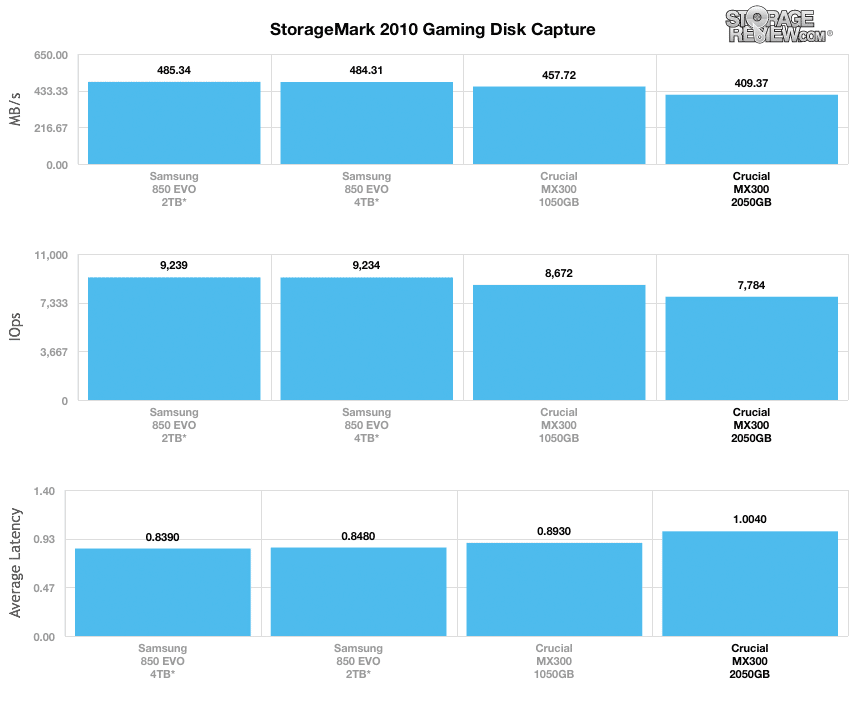
Conclusion
The MX300 SSD series offers several, somewhat different, capacities with the 2050GB being the highest. Like all of the drives in the series, the 2050GB comes with Adaptive Thermal Protection to help keep the drive cool and protects data with both AES 256-bit encryptions and RAIN technology. The drive comes with a 3-year limited warranty and can be currently bought for just under $550 or less than $0.28/GB.
The drive isn’t going to impress many with its performance. It came in either last place, or second to last place in all of our benchmarks. But it should be kept in mind that the drive wasn’t created to be a powerhouse and while the numbers seem low compared to the higher performing Samsung drives, the MX300 will still blow HDDs out of the water. In our 2MB IOmeter test the drive gave us 462.91MB/s write and 347.21MB/s in sequential and 461.56MB/s write and 351.51MB/s in random 2MB. In our 4K IOmeter test the 2050GB gave us 26.82MB/s and 6,867 IOPS in read performance and 106.01MB/s and 27,139 IOPS write performance.
In mixed server workloads the 2050GB topped out at 33,824 IOPS in our database profile, 22,250 IOPS in our web server profile, 20,787 in our file server profile, and its best showing in the mixed server was in our workstation profile with a high score of 35,449 IOPS (still lower than the other drives).
The real-world consumer tests showed the drive come in last across the board. Again not terrible performance just less than the other high capacity drives tested. In our HTPC the drive gave us 307.4MB/s, 6,627 IOPS, and a latency of 1.136ms. In the productivity test the 2050GB had a showing of 120.33MB/s, 4,113 IOPS, and a latency of 1.914ms. And in our gaming test the drive gave its best performance with 409.37MB/s, 7,784 IOPS, and a latency of 1.004ms.
Pros
- 2TB of capacity for a good price
- Adaptive Thermal Protection
- AES 256-it encryption
Cons
- Not a strong performer in any of our tests
The Bottom Line
The Crucial MX300 2050GB SSD offers a lot of capacity and reliability for a good price.


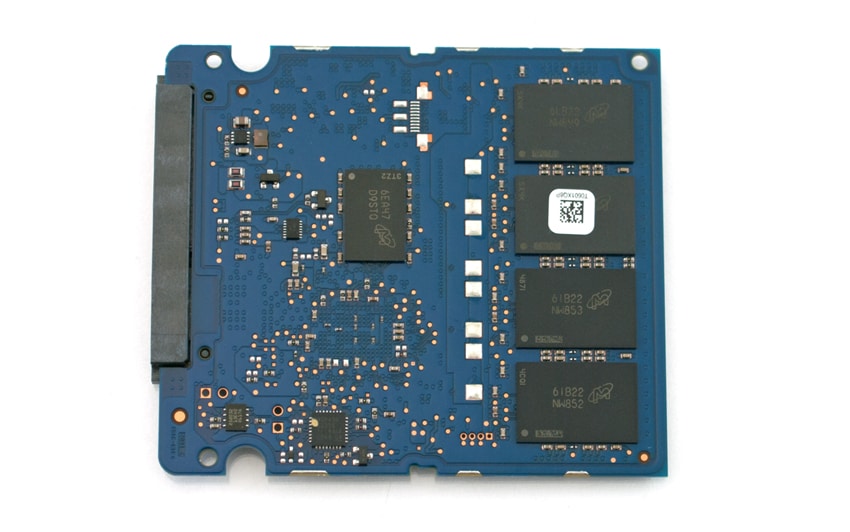


 Amazon
Amazon